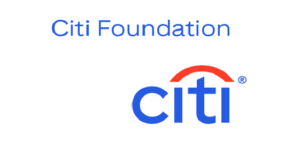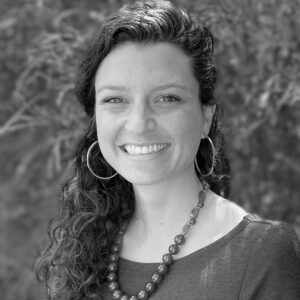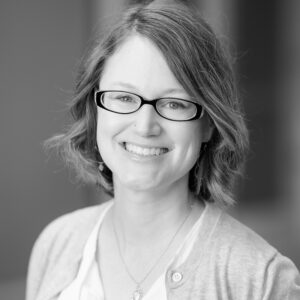Financial Health Runs in the Family: Intergenerational Trends and Opportunities
Family members don’t live in silos, and financial health solutions can’t, either. How can we take a holistic approach to meet every generation’s needs?
-
Program:
-
Category:
-
Tags:

Financial Security in the Interdependence Era
The U.S. is in the midst of a dramatic demographic shift. As the number of Americans over age 65 swells and wealth transfers reach record levels, we face major questions about the future of social safety nets, economic mobility, and the impact on existing economic and racial inequity.1, 2
People naturally think of these shifts through a generational lens: How will Baby Boomers navigate the significant medical expenses they’ll incur during retirement?3 What does financial health look like for Gen Xers juggling work, child-rearing, and caring for parents?4 Will Millennials and Gen Z enjoy the same stability as prior generations despite skyrocketing costs?5
These groupings can help us understand the financial experiences unique to each generation. But they can also create siloed thinking that overlooks the financial struggles all generations share: Less than half of each generation is Financially Healthy.6, 7
This paper shares insights from research and a 2025 convening of 30 cross-sector leaders on intergenerational financial health. It offers a new lens to help providers, policymakers, and employers meet needs across life stages and build a system that works with – not against – our interdependence.
True Financial Health Takes Shape Across Generations
People don’t live their lives in age-defined siloes. Families always have and will always operate intergenerationally. The simple reality? To support the financial health of one generation, we must examine how their financial lives are intertwined with other generations.
1 in 4
American adults live in households with three or more generations.8
44 million
Americans serve as unpaid caregivers, including about 20 million who are supporting a parent.9
75%
of families with a child in college use parent savings to cover costs.10
6%
of households currently hold student loans for a child or grandchild’s education.11
Families Share Financial Health Challenges…
People young and old share many of the same financial challenges. Many are struggling to keep up with our rapidly evolving financial, cultural, and social context – no matter their age.
A “do-it-yourself” financial system has taken shape over the last few decades, transferring risk from institutions and governments to individuals. People of all ages are grappling with the shift away from pensions to defined contribution plans, with many guessing at the savings they need for their later years.12, 13 Many don’t just feel like they’re managing their finances on their own, either.
Some generations have taboos about discussing finances openly, leaving other generations to navigate an increasingly complex landscape on their own. Gen Zers, for example, face a labor market that rewards their investments in higher education, but at a price that compromises their ability to make ends meet and save.14 On the other hand, parents of young children, often Millennials, face childcare costs topping $19,000 a year without a community of support to fall back on.15
Debt is also on the rise across all age groups, with total consumer household debt hitting $18 trillion.16 While previous generations saw mortgages or student loans as “good debt,” this perception may be changing – sowing shame among those unable to shake off the debt that accompanied these major milestones.17
The result? A rising sense of pessimism about the prospect of financial stability, along with nihilism about trying to be Financially Healthy when that reality feels so out of reach.18 Perhaps, then, the solution isn’t to further isolate generations by addressing them individually, but rather reconstruct our thinking of financial health entirely.
“We could continue to have the retirement conversation, and the student loan conversation, and the homeownership conversation, separately – but there’s value in talking about these together, because that’s how families operate.”
Adeeb Mahmud
Chief Program Officer, Financial Health Network
…But They Can Also Share in the Solutions
Reorienting toward the interconnectedness of financial health, and approaching solutions holistically, has the power to strengthen all generations – not just a few.
-
-
- Design tools that help families manage money together: Families already manage money intergenerationally, from young adults relying on their parents for financial support to adult children assuming power of attorney over their aging parents’ finances. Designing tools that support intergenerational financial management while upholding privacy and security can help people of all ages navigate their finances confidently.
- Offer new pathways toward security: Tools like 529 college savings accounts have long helped people build wealth from a young age. However, research has found they disproportionately benefit families who are already well off.19 Innovating to create more flexible products can help narrow the wealth gap from birth.
- Foster environments that support better financial decision-making: What if people could more easily make good decisions about their day-to-day financial management? Simplifying sound saving, borrowing, spending, and planning practices at every age can pave the way to financial health for this generation and the next.
- Offer verified guidance via platforms people trust: As governments and other trusted sources compete with platforms like TikTok for consumer attention, delivering powerful messages through the right channels is key. Equally important is pinpointing which of the myriad financial education strategies out there actually work – and discarding those that don’t.20
-
About Financial Health Frontiers
Supported by the Citi Foundation, Financial Health Frontiers is an ambitious initiative that aims to identify the needs, challenges, and opportunities for the next era of financial health. Guided by an Advisory Council of industry experts, business leaders, policymakers, advocates, and researchers from across the country, the Frontiers initiative asks: What are the trends that will most influence financial health over the next generation? How can we harness them for greater and more equitable financial health? Who is not at the table now but has a critical stake in the financial health movement?
Financial Health Frontiers is grateful to the visionary members of its Advisory Council for their input and guidance:
Naomi Camper, Chief Policy Officer, American Bankers Association
Kelvin Chen, Senior EVP and Head of Policy, Consumer Bankers Association
David Clunie, Principal and Head of Community Relations, Edward Jones
Dr. Tamarah Duperval-Brownlee, Chief Health Officer, Accenture
Anne Evens, CEO, Elevate
Maria Flynn, President & CEO, Jobs for the Future
Jonay Foster Holkins, Founder, Trendline Strategies LLC
Abby Hughes Holsclaw, Senior Director, Asset Funders Network
Gigi Hyland, Executive Director, National Credit Union Foundation
Gary Koenig, Vice President, Financial Security, AARP Public Policy Institute
Laura MacCleery, Senior Director, Policy & Advocacy, UnidosUS
Racheal Meiers, Senior Director, Community and Social Health, Kaiser Permanente
Harold Pettigrew, President & CEO, Opportunity Finance Network
Leigh Phillips, President & CEO, SaverLife
Nasir Qadree, Founder and Managing Partner, Zeal Capital Partners
Ida Rademacher, Vice President and Co-Executive Director, Financial Security Program, Aspen Institute
Cy Richardson, Senior Vice President for Programs, National Urban League
Kareem Saleh, Founder & CEO, FairPlay AI
Kristen Scheyder, Senior Vice President, Citi Foundation
John Soroushian, Senior AI Advisor, FinRegLab
Jennifer Tescher, President and Chief Executive Officer, Financial Health Network
Erin White, Senior Director, Corporate Initiatives, Business Roundtable
Thank you to the many Financial Health Network staff who supported the creation of this publication.
- Talmon Joseph Smith, “The Greatest Wealth Transfer in History is Here, with Familiar (Rich) Winners,” NY Times, May 2023.
- “Demographic Turning Points for the United States: Population Projections for 2020 to 2060,” United States Census Bureau, February 2020.
- Berhanu Alemayehu & Kenneth E Warner, “The Lifetime Distribution of Health Care Costs,” Health Services Research, June 2004.
- Kim Parker and Eileen Patten, “The Sandwich Generation,” Pew Research Center, January 2013
- Jonathan Vespa, “The Changing Economics and Demographics of Young Adulthood: 1975-2016,” United States Census Bureau, April 2017.
- Andrew Warren, Wanjira Chege, Kennan Cepa, Ph.D., & Necati Celik, Ph.D., “Financial Health Pulse® 2024 U.S. Trends Report,” Financial Health Network, September 2024.
- Generational definitions from Michael Dimock. See: Michael Dimock, “Defining generations: Where Millennials end and Generation Z begins,” Pew Research Center, January 2019.
- Amy Goyer, “Family Matters: Multigenerational Living Is on the Rise and Here To Stay,” Generations United, April 2021.
- “Caregiving in the U.S.,” National Alliance for Caregiving, May 2020.
- “2024 How America Pays for College,” Sallie Mae Bank, 2024.
- “Economic Well-Being of U.S. Households in 2024: Appendixes,” Board of Governors of the Federal Reserve System, May 2025.
- Craig Copeland, Michael Conrath, Sharon Carson, & Alex Nobile, “Student Loans and Retirement Preparedness,” Employee Benefit Research Institute, February 2024.
- “Boomers Lament Disappearance of Pensions,” Center for Retirement Research, March 2022.
- Robert Siciliano & Gal Wettstein, “Can the Drawdown Patterns of Earlier Cohorts Help Predict Boomers’ Behavior?” Center for Retirement Research, September 2021.
- Georgia Poyatzis & Gretchen Livingston, “We analyzed 5 years’ worth of childcare prices. Here’s what we found.,” U.S. Department of Labor Blog, September 2024.
- “Household Debt and Credit Report (Q1 2025),” Federal Reserve Bank of New York Center for Microeconomic Data.
- For example, see: Meghan Greene, Andrew Warren, & Jess McKay, “The Gender Gap in Financial Health,” Financial Health Network, July 2022.
- See: K. Jeremy Ko, PhD, Olivia Valdes, PhD, Ritta McLaughlin, & Gary R. Mottola, PhD, “How Gen X Compares Financially to Other Generations: Doing Alright but Feeling Bad,” FINRA Investor Education Foundation, October 2024, and Meghan Greene & Lisa Berdie, “Households Under Financial Pressure,” Financial Health Network, September 2024.
- Richard V. Reeves & Nathan Joo, “A tax break for ‘Dream Hoarders’: What to do about 529 college savings plans,” The Brookings Institution, June 2017.
- For an example of a financial education program, see: “Jump$tart Clearinghouse,” Jump$tart Coalition for Personal Financial Literacy.
Written by
Financial Health Runs in the Family: Intergenerational Trends and Opportunities
Explore the trends. Discover new insights. Build stronger strategies.


